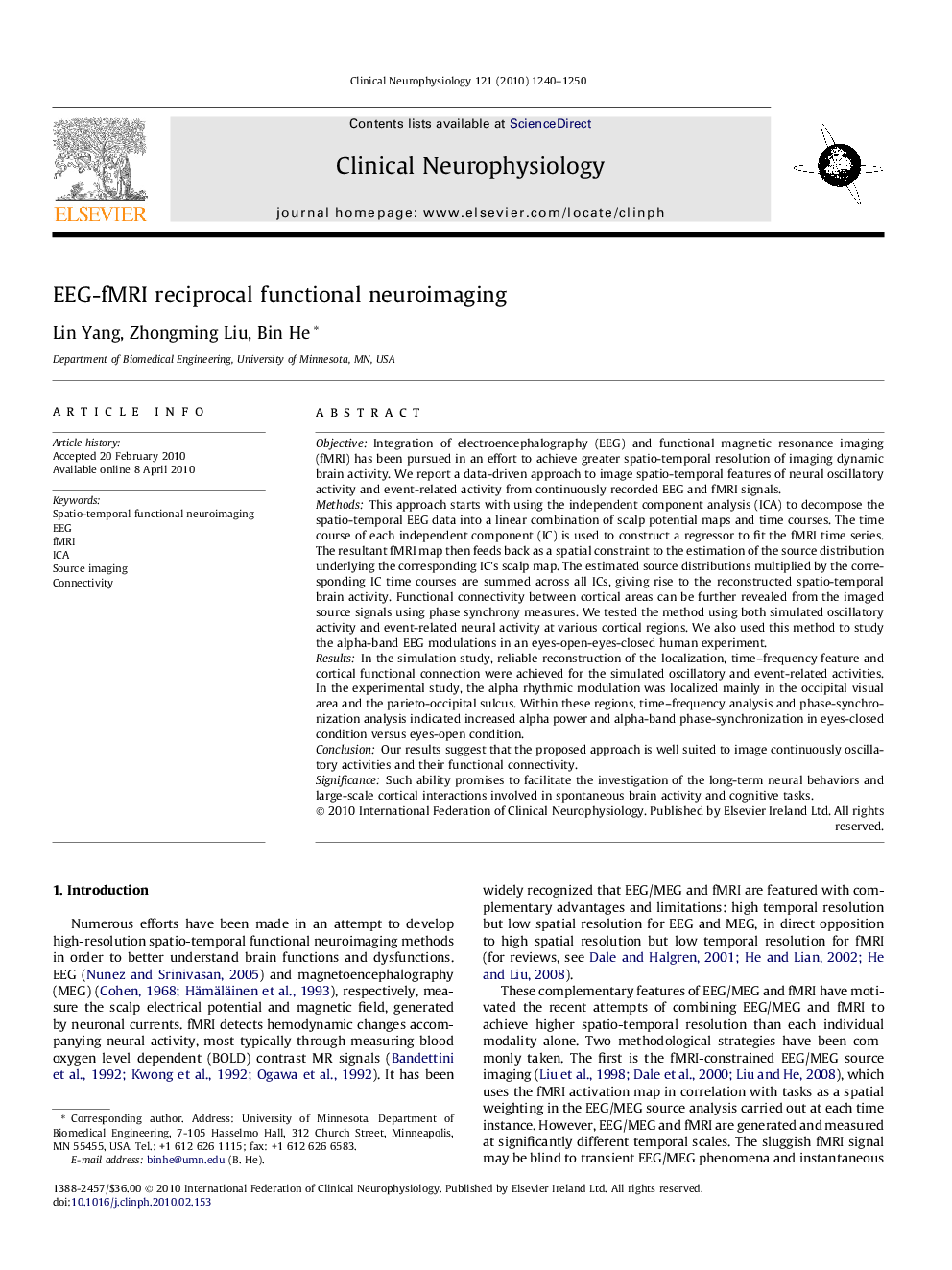| Article ID | Journal | Published Year | Pages | File Type |
|---|---|---|---|---|
| 3044846 | Clinical Neurophysiology | 2010 | 11 Pages |
ObjectiveIntegration of electroencephalography (EEG) and functional magnetic resonance imaging (fMRI) has been pursued in an effort to achieve greater spatio-temporal resolution of imaging dynamic brain activity. We report a data-driven approach to image spatio-temporal features of neural oscillatory activity and event-related activity from continuously recorded EEG and fMRI signals.MethodsThis approach starts with using the independent component analysis (ICA) to decompose the spatio-temporal EEG data into a linear combination of scalp potential maps and time courses. The time course of each independent component (IC) is used to construct a regressor to fit the fMRI time series. The resultant fMRI map then feeds back as a spatial constraint to the estimation of the source distribution underlying the corresponding IC’s scalp map. The estimated source distributions multiplied by the corresponding IC time courses are summed across all ICs, giving rise to the reconstructed spatio-temporal brain activity. Functional connectivity between cortical areas can be further revealed from the imaged source signals using phase synchrony measures. We tested the method using both simulated oscillatory activity and event-related neural activity at various cortical regions. We also used this method to study the alpha-band EEG modulations in an eyes-open-eyes-closed human experiment.ResultsIn the simulation study, reliable reconstruction of the localization, time–frequency feature and cortical functional connection were achieved for the simulated oscillatory and event-related activities. In the experimental study, the alpha rhythmic modulation was localized mainly in the occipital visual area and the parieto-occipital sulcus. Within these regions, time–frequency analysis and phase-synchronization analysis indicated increased alpha power and alpha-band phase-synchronization in eyes-closed condition versus eyes-open condition.ConclusionOur results suggest that the proposed approach is well suited to image continuously oscillatory activities and their functional connectivity.SignificanceSuch ability promises to facilitate the investigation of the long-term neural behaviors and large-scale cortical interactions involved in spontaneous brain activity and cognitive tasks.
